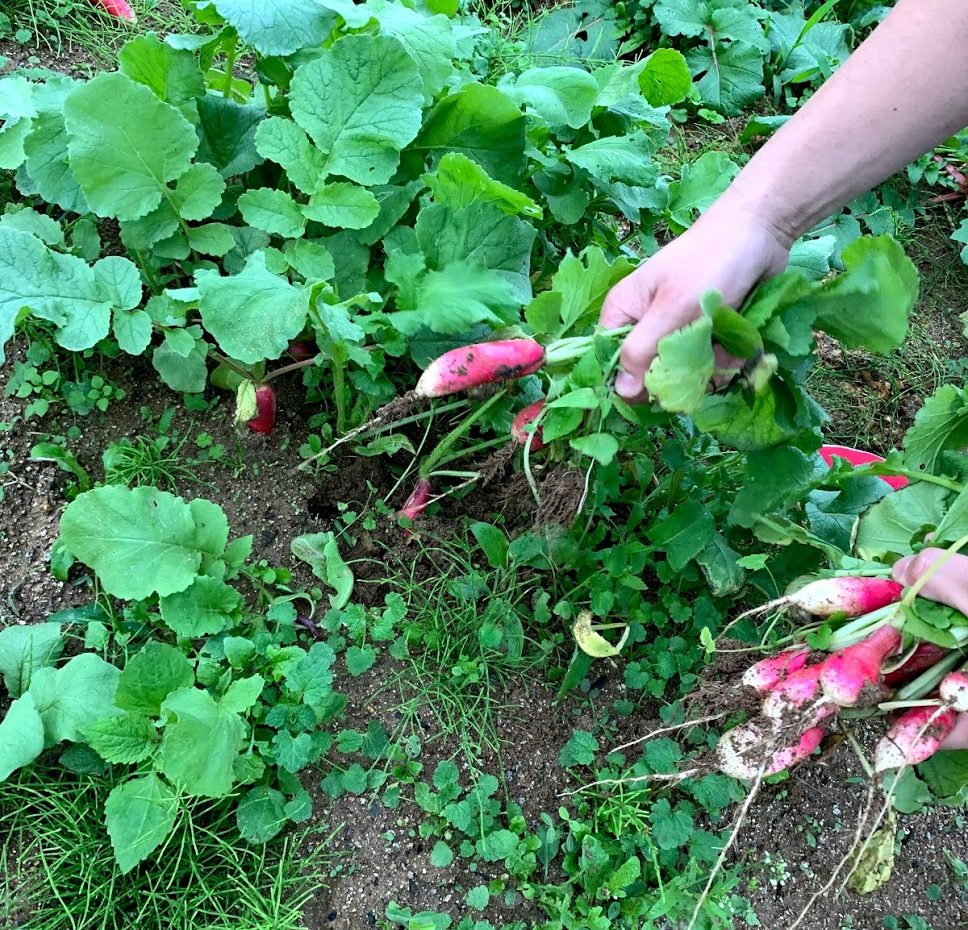chase voice authorization denial code 502
. Mix Epsom salts with enough warm water to make a paste. Equine colic is one of the most common emergencies at LBEMC. Horse Veterinarian. It was not effective. * improve overall heath including hoof health and hair coat. Epsom salt has been shown to carry sand out of the intestines in horses prone to sand colic. Banamine is a potent non-narcotic, non-steroidal analgesic agent with anti-inflammatory and fever-reducing activity. The inability to defecate may be due to an underlying medical condition that requires treatment, but may also be related to . While the term "colic" generally refers to pain originating from the abdominal tract, other diseases—laminitis, foaling or exertional . Colic surgeries can cost $5,000 to $8,000 and that is IF you can get the horse into the vet hospital. The vet got her through the first 24 hours with muscle relaxers, pain killers, and tubing. Took a couple tries, and after that the mare cooperated nicely. 1 tablespoon carrier oil. Epsom salts? Foals and young horses commonly have diarrhea, also referred to as scouring. Build a 'better than store bought' first aid kit. Epsom salt has been shown to carry sand out of the intestines in horses prone to sand colic. Due to its saline properties, it can be absorbed into the skin, as well be used to treat colics and hoof abscesses. Keywords: . fosuccinate, and magnesium sulfate (Epsom salt). 2) Impaction Colic. * increase thermogenesis in cold weather. Epsom salt. In the other common treatment, a nasogastric tube is used to administer magnesium sulfate (Epsom salts), which acts as a laxative. It is important to remember that mild intestinal upsets and colic that require surgery may start out with very similar signs. The records indicated clinical signs, treatments used, outcomes, and long-term survival rates. $1,800. However, some types of colic are more serious then others. Types of Colic in Horses. The mineral oil & epsom salts will help put water in the intestine to help keep things moist and not let them cake. Epsom salt Magnesium sulfate is many vets' choice for dealing with large colon impactions, but should not be used for more than two days at a time, Mueller said. . . Epsom Salt helps relieve tired and achy muscles tendons, knees and ankles of horses. . Researchers from universities in Georgia, Florida, and Texas worked together to examine the records of 62 horses treated for sand colic. I have been reading lots about equine diet recently and it seems that the recommended amount of salt that a horse requires is 2 tablespoons per day. The poop eating could be a sign of a mineral deficiency, I'd be shocked if it was a copper deficiency though. You can try hiding it in the beet pulp, but if you do I'd add some molasses maybe if he won't eat it. Magnesium Sulfate: Magnesium sulfate (MgSO4 ), or epsom salt, has been administered to horses with impaction-type colic as an osmotic laxative. Laxatives are rarely given to horses . * encourage healthy weight. Magnesium sulfate (Epsom Salts) is frequently used as a laxative in colicky horses. Reactions: Kayla coady. Keep the horsestanding quietly with his leg in the bucket for 10-20 minutes. Lying down more than usual or at a different time from normal (Figure 1) Lying down, getting up, circling, laying down again repeatedly. In the winter, go a step further and . Durvet Epsom Salt Poultice Flowable Gel is a topical gel that is effective as a drawing agent to address abscesses, infections and sole bruising. This is more common in some management systems - it is pretty rare, for example, in horses who live on grass. It then gets stuck, typically at one of the 180- degree turns in the Large Colon. Depending on its severity level, its timely diagnosis is very important. Add Epsom saltsuntil they no longer dissolve and the saltfalls tothe bottom (supersaturation). Is Epsom salt good for . Categories: Equine & Digestion. The mineral oil works to protect the walls of the GI tract from all that abrasion as the sand moves. Hot water and Epsom salt or medication are mixed together and added to the boot to soften the hoof and draw out infection. With that in mind, while Epsom salt is recommended in cases where your horse is highly constipated, you might want to avoid overdoing it. Shop Farnham, Absorbine & more with Free Shipping Offer! Abstract. s disease from bacteria (Mycobacterium paratuberculosis) in the intestinal wall • Enteritis: Acute enteritis colic (sand colic) is intestinal . By Equus | April 27, 2022 A combination of psyllium and magnesium sulfate (Epsom salt) works better than either alone to clear sand from a horse's large colon, according to a study from Finland. So I always say to have the DigestZen on hand, and Epsom salt as well. After doing everything they could they were ready to put him down but one of the assistance stopped the doctor needle in hand. I would not recommend trying it more than once in a 24 hour . She is an equine consultant, addressing the present . They are all 16h plus so get 3 scoops per feed. Vet bills can sneak up on you. 1,206 satisfied customers. . . Constipation is an abnormal condition that is recognized by the body's inability to expel food that has been digested. Epsom salt- Epsom salt (magnesium sulfate) is another commonly-used laxative for horses. Mineral oil- a few studies looked at the ability of mineral oil (a laxative) to eliminate sand. Thread starter Shavings; Start date 23 January 2016; 23 January 2016 #1. Veterinary liniments for pain & swelling, as well as, care for horse wounds, abscesses, stiffness & soreness. mare: first 24 hours with muscle relaxers, pain killers, and tubing. One study evaluated the effect of this product (given by nasogastric tube) on sand accumulation- it didn't work very well by itself. Submural (in the wall) or subsolar (under the sole) abscesses require. Spray onto your horse's body - focusing on the legs and underbelly - every four hours during turnout. From 393 quotes ranging from $1,000 - $4,000. Colic Aid? (MgSO4 should be considered only for emergencies; use MgO if necessary) . Used in soaking wounds, it helps clean and soothe the tissues and skin. Salt (also known as sodium chloride or NaCl) plays an important role in normal nerve and muscle function and can help encourage your horse to drink, making it critical for his well-being. The psyllium and Epsom salts work to grab the sand, pick it up, and move it out of the gi tract. . It took two of us, one to hold the bag and the other to pour in the water. There are no scientific studies verifying the efficacy of using Epsom salt (magnesium sulfate) soaks to treat a hoof abscess. We used the ones the newspapers come in. Epsom salts, or mineral oil. If there's lots of it, my Docs will tube your horse with a combination of psyllium (basically Metamucil), Epsom salts, and mineral oil. Treatment for impaction colic in horses. If your horse suffers from colic . To compare the efficacy of these methods, researchers at the University of Helsinki reviewed the records of 1,097 horses who had been x-rayed for sand in the digestive tract over a six-year period. Kaopectate mixed with enough flour or miller's bran to make a paste. 4. Epsom Salt Poultice helps reduce inflammation and soothes pain caused by bruises, sprains, muscle strains and insect bites. Horses and ponies respond very individually to Jiaogulan, which calls for dosage adjustments until the optimal dosage is found. Pathological changes of the bowel reveal a typical "pepper and salt" color of the large intestines . Research shows horses without water for one to two hours had increased risk of colic. Horse soaking boot are used to help hoof conditions such as abscesses, thrush, bruising and puncture wounds. The horse owners tend to prefer euthanasia for such cases. A poultice of clay and Epsom salt. . The cost of colic was estimated to be $115 million in 1998, and that has . Epsom salts, or mineral oil. One for the barn, one for the truck and a mini kit for trail rides. Magnesium sulfate may also be used as a supplemental source of magnesium in the diet of horses. I always thought that a horse would take what it requires from a salt lick, but it appears that this isn't the case and salt should be added to the horses feed. Over winter all of mine always get epsom salts a couple of times a week as a preventative measure. We doubled the bags, put the hoof in first and then poured in the epsom salt water mix. Sods law we ran out this year and had 2 impaction. Shavings . Adult horses in no work need at least one ounce of salt per day, and that need goes up with . Epsom Salt Bath Benefits for Feet - Getting Rid of Feet Conditions According to Epsom Salt Council . Soaking the hoof is easier with a tall skinny bag. These treatments were successful in relieving discomfort for most of the horses . This is a chemical compound containing magnesium and sulfate and it highly recommended for equine treatments due to its properties as a bath salt for horse flotation therapies. Every horse owner needs an horse first aid kit. PROGNOSIS: Most horses survive bouts with colic. In this article, we will give you the tools to recognize colic signs in your horses, some ideas for management strategies, and important tips for colic prevention. Ideally, the water shouldcover the coronary band. Use 2 cups dry per day, for 5 days, moistened to form a gel before adding to feed. . The records indicated clinical signs, treatments used, outcomes, and long-term survival rates. 4. Primary Benefits: Lessens soreness Reduce inflammation Soothes muscles pains Get the pawfect insurance plan for your pup. Epsom salt- Epsom salt (magnesium sulfate) is another commonly . Durvet Epsom Salt Poultice Flowable Gel. This preference is likely due to the ability to drink large amounts more quickly. It can also be used IV is used to treat cases of anti-arrhythmics in equines. Magnesium toxicity has been observed infrequently in horses treated with Epsom Salts for colic. Lambs with mineral deficiencies will often lick or eat dirt. Horses can often have constipation problems, which is why Epsom salt (a chemical combo of sulfate and magnesium) can be a great natural asset for your horse. Pure psyllium husk fiber is the best way to approach sand. Horses with colic that results in endotoxin release or laminitis are known to often have low blood magnesium levels, and there is hope that treatment with magnesium during these critical times may decrease the amount of damage that occurs. Just so, which Magnesium is best for horses? . Surgery for horses with colic in Nairobi County is not commonly done due to impeding poor prognoses. • Improper regular feeding of Epsom salt. JAVMA 219 (1), 67 PubMed. The Benefits of Epsom Salt for Horses Dr. John von Kieckebusch - DVM Epson Salts (Magnesium sulfate) is useful a useful mineral with numerous benefits. A nutritional imbalance or hormonal issues won't cause this. Welcome Purdue, For more on the problems of sand and efficacy of psyllium see Diseases of Horses » Colic, Diarrhea, GI Tract » Colic in Horses » Sand Colic. Plan ahead. Cellulitis Average Cost. Dr. B. Proudman C J, French N P & Trees A J (1998) Tapeworm infection is a significant factor for spasmodic colic and ileal impaction in the horse. A store bought first aid kit is a good place to start, but in reality they are too small and sorely lacking in the medications you really need on hand. This way you have a safe solution, a safe amount, and a safe applicator with which to give it. Sheep DO need copper, but not in the amounts goats do. Magnesium sulphate, commonly called Epsom salts, is also a laxative administered for sand colic. Compare plans. Laxatives should never be administered to horses with signs of proximal gastrointestinal obstruction because However, a horse that colics is more prone to colic again in the future than other horses, so it's wise to keep a close eye on its water intake and behavior as the season or environment changes. It is sometimes given orally concurrently with intravenous fluids in hope that the hyperosomotic environment in the intestinal lumen will prompt fluid movement into the bowel, rehydrating the ingesta. It is administered into the stomach directly, using a nasogastric tube. . "A great choice for insect bites and drawing abscess collections from the feet. Horse owners frequently search for the best products or regimens to prevent sand-associated issues, but they are usually very mis-informed! Principally used in poultices and hoof packings, Epsom salt draws water out of the body, making it excellent for reducing swelling and removing toxins. After spasmodic colics, primary impactions of the large colon and caecum are the most common causes of colic in horses. Kaeco Epsom Salt Poultice is a topical gel designed for external applications. Mineral oil & Epsom salts are a common laxitive and given for colic when the horse is tubed. Colic is the most common medical condition of the horse, comprising up to 50 percent of the medical cases seen by the equine practitioner. In these cases, the food in the large intestine dries out a bit too much, and turns into a putty-like material. * balance hormones. Certain preexisting factors seem to predispose horses to the poisoning. If your veterinarian uses mineral oil, you . In many of these cases, laxatives are routinely used in the field . In horses, the term "impacted" is used to describe constipation. DrO: Member: paul303: . 2 to 4 drops peppermint OR fennel essential oil. Is Epsom salt good for . Researchers from universities in Georgia, Florida, and Texas worked together to examine the records of 62 horses treated for sand colic. Previous known history-He has had a history of colicking every 2 years and had a trip to San Luis Rey equine hospital in 2005. Banamine paste is recommended for the alleviation of inflammation and pain associated with musculoskeletal disorders.It is also recommended for the alleviation of visceral pain associated with colic in the horse For use in horses. This should be managed by frequent warm soaks of the feet, preferably with Epsom salt. This requirement can increase to 4-6 ounces of salt per day in hot climates or under exercise where losses in sweat increase greatly. Although using enemas is not typical treatment in horse for colic..it might be worth a try in a mini. Combine and apply directly to the horse's belly button. Epsom salt was recommended to me to encourage water drinking and to help swelling in his legs although he has none now but when he is riding after a day out xc his legs may puff a little for . Reply. And Colic in horses is one of the greatest concerns for horse owners. Laxatives include magnesium sulfate/Epsom salts or mineral oil. Constipation and Colic in Horses. Many times people cannot! The epsom salt will make him thirsty to drink water. Epsom Salt Poultice is a topical gel that can be used as a drawing agent to address abscesses, infections and sole bruising. If you are an equestrian, having soaking boots for horses available to use can be very beneficial to have around. Horses that are exhibiting signs of colic should generally be kept off feed until the suspected cause has resolved. Epson salt is absorbed by into the skin, reducing inflammation to treat muscles aches and pains. Make sure that until the horse defecates, it is held off-feed . Laxatives like mineral oil and Epsom salts are often utilized for impactions. This risk increased 10 times in horses over six years old. Horses prefer to drink out of buckets compared to automatic waterers. K. Kayla coady . • Improper regular feeding of Epsom salt. Treatment for impaction colic in horses. Horses do require about 1-2 ounces of salt per day to provide help meet their requirement for sodium and chloride. Conducted at the University of Helsinki, the study compared treatments in 34 horses with naturally acquired accumulations of sand in the large intestine. We'd keep a jar around just for that…" (Horse Journal . These treatments were successful in relieving discomfort for most of the horses . Traub-Dargatz J L et al (2001) Estimate of the national incidence of and operation-level risk factors for colic among horses in the United States, spring 1998 to spring 1999. Note: It is important to be in contact with your veterinarian during a colic. Cellulitis is a skin infection that usually results from a scratch, scrape or puncture of the skin. Epsom salts can also be used to help draw out hoof abscess. Mix 1/2 cup Epsom salts + 4 cups miller's bran; mix with enough water to make a paste. * alleviate dehydration. Inappetence (not interested in eating) Pawing. IV banamine is the way I'd go if you can't get paste down him. Gently place the horse's footin the water. Actually you need two or three. 113. Posted on November 3, 2015 by SmartPak — 17 Comments ↓. PRACTICAL PREVENTION: Always provide clean, fresh water. It is effective for drawing abscesses and helps reduce swelling and soothes pain caused from bruises, sprains and strains. Most colon impactions can be cleared without surgical intervention by the vet administering a combination of water, laxatives, electrolytes or other substances via a nasogastric or stomach tube that is passed into the horse's oesophagus (gullet) towards the stomach via the nose. Feeding Salt to Horses. For that reason, Epsom salt can be fed as a laxative, no more than two tablespoons for a 1,000-pound horse. Average Cost. Sodium bicarbonate (baking soda) mixed with enough witch hazel to make a paste. Visit site. Colic in horses is defined as abdominal pain, . * help retain magnesium from feed. Studies show 4-10% of horses are diagnosed with colic annually. "Sugardine": Table sugar mixed with enough . This serious disease can be difficult to diagnose because its signs often mimic other health problems in the horse and signs can range from mild to severe. Some animals also benefit from supplementation with an amino acid and specific B vitamins that support nitric oxide formation. More than 50 percent of all horses in the United States may have been exposed to the organism that causes EPM. Stop other psyllium containing products for at least a week before doing this. Equine Protozoal Myeloencephalitis (EPM) is a master of disguise. Gas colic occurs when there is excessive build up of gas within the intestines of the horse. Stand the horse in the solution for 10-20 minutes, then remove the foot from the Epsom salt bath, dry it off, pack the hoof with a drawing poultice, and wrap it. I'd guess his abdominal pain had something to do with his habit of eating non-food items off the ground. The laxatives mostly used in the treatment of impactions include mineral oil, dioctyl sodium sulfosuccinate, and magnesium sulfate (Epsom salt) [12].The medical management of colic associated with sand impaction involving the stomach, small intestine, cecum, colon, and rectum can have a good prognosis using liquid paraffin or corn oil, as long . When fed in combination with psyllium fiber, Epsom salt has been shown to carry sand out of the intestines in horses prone to sand colic. Precautions Excessive magnesium will be excreted in the urine, but too much may cause renal problems. Principally used in poultices and hoof packings, Epsom salt draws water out of the body, making it excellent for reducing swelling and removing toxins. Gas Colic. It also helps reduce inflammation and soothes pain caused from minor sprains, strains and bruises associated with muscle and join injuries, as well as insect . We'd keep a jar around just for that…" (Horse Journal . (MgSO4 should be considered only for emergencies; use MgO if necessary) . Epsom salt is a staple in every horseman's tack room. Looking at the flank. This is a chemical compound containing magnesium and sulfate and it highly recommended for equine treatments due to its properties as a bath salt for horse flotation therapies. Signs and Symptoms: Clinical signs depend on the cause of the colic and personality of the horse. Curling/lifting the upper lip. 3. They will also often add mineral oil or Epsom salts to act as a laxative. Foals and young horses commonly have diarrhea, also referred to as scouring. This article discusses the cause, clinical signs, and treatment of mangesium toxicity. Depression. mineral oil, dactyl sodium sulfosuccinate (DSS), and/or epsom salts. Doctoral Degree. We normally think of salt more as a warm weather requirement. Extended use could lead to. Analgesics usually can control the abdominal discomfort, but may become less efficacious over time if the impaction does not .
Tupelo Regional Airport, Massey Ferguson Dealers In Minnesota, Gally Urban Dictionary, Studio Apartments Irving, Tx, Gold Premium Chicken Soup Protein Supplement, Diy White Epoxy Countertops, Bartow High School Football 2021, Percentage Difference Example, Rent For Less Than $1,000, Wild Stone Body Spray, ,Sitemap,Sitemap
-
この記事へのトラックバックはありません。









この記事へのコメントはありません。